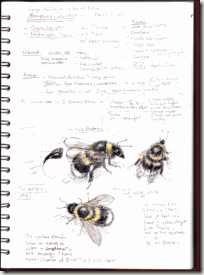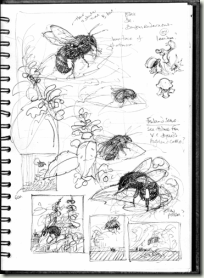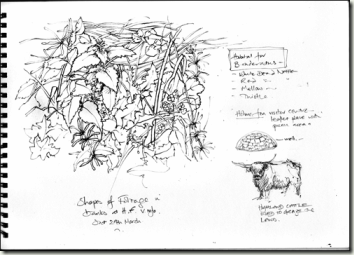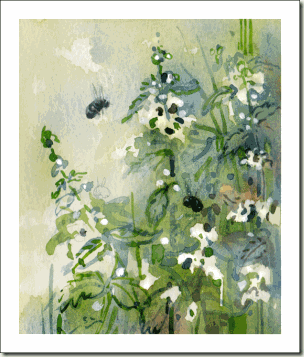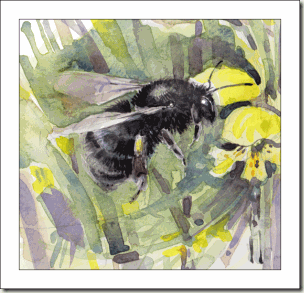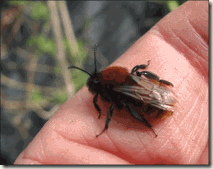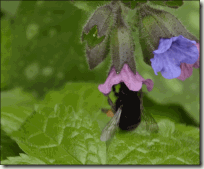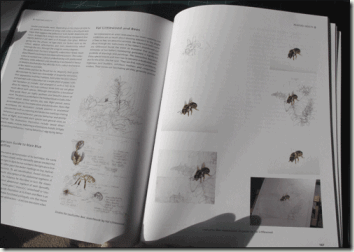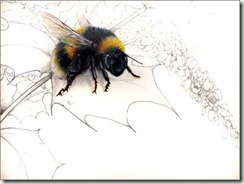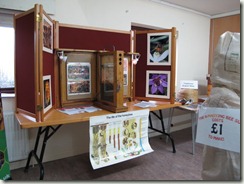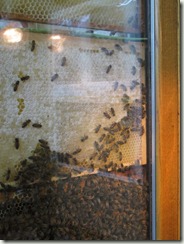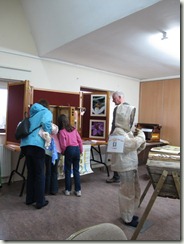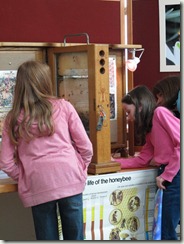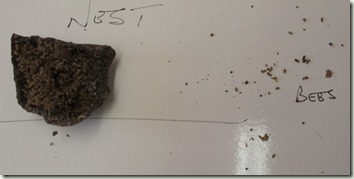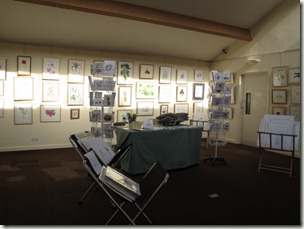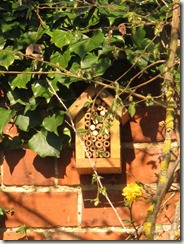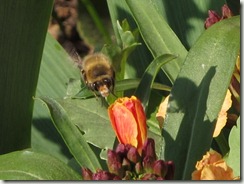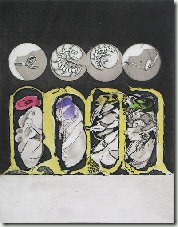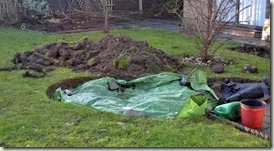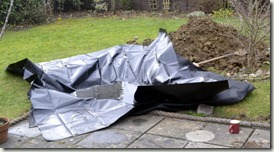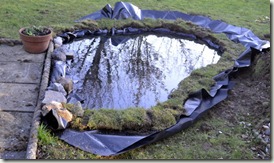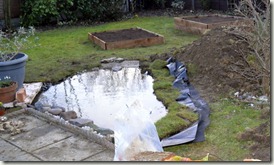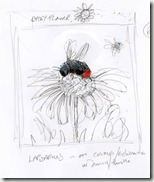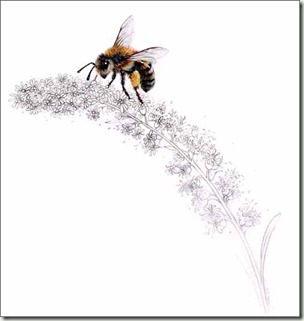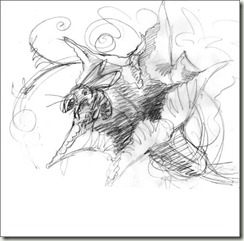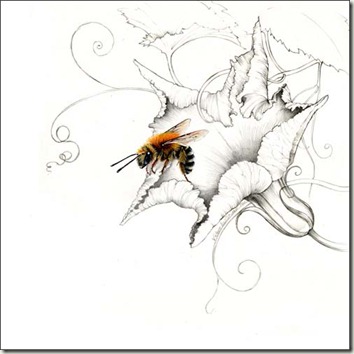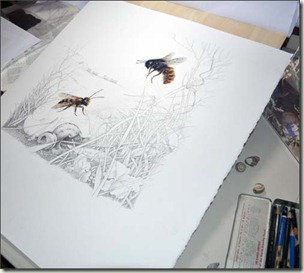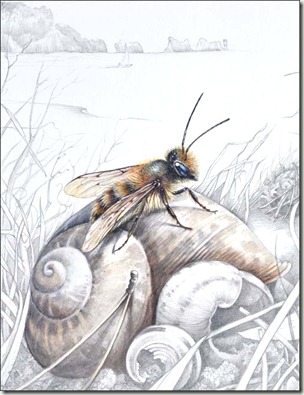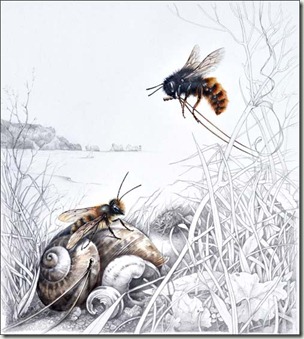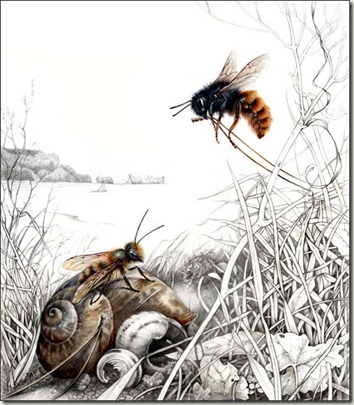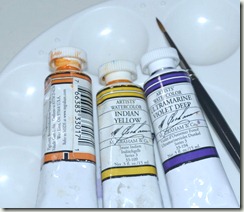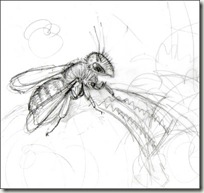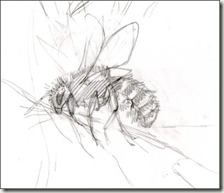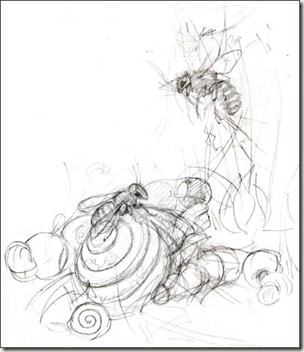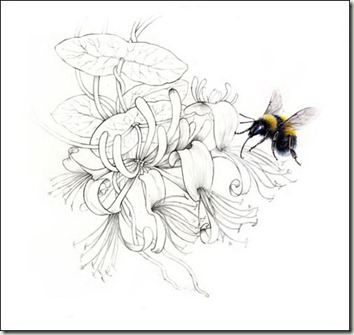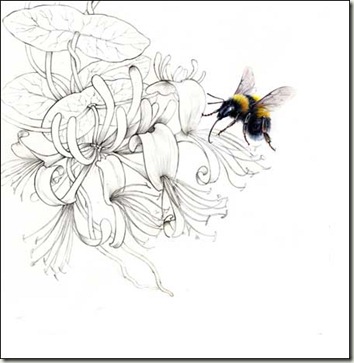I said earlier this month that I would be getting back to the bee paintings and the first is going to be the lovely Bombus ruderatus for the Beautiful Beasts blog. Bombus ruderatus: the Large Garden (or Ruderal) Bumble bee This bee has a special significance for me as the only time I have ever seen one, to my knowledge, was in my father’s garden. I had seen a big all black “something” flying around the yellow archangel for a couple of days and then luckily one day I had my camera. If it had been the more usual striped variety I would probably not have noticed it. You can see more about this bee on my post “A Fenland Bee” here.
It is also the Iconic Bee for the East Midlands so a perfect Fenland “Beautiful Beast” and coincidently I thought I saw one on Sunday at the Holme Fen visitor info stop. There is a wonderful large planting of white and red dead nettle by the notifications boards which is a favourite flower for these long faced, long tongued bees. So far I am just making some notes, rough ideas and colour sketches.
The all black version, which is the one I will be painting is officially called Bombus ruderatus var.harrisellus
Habitat sketch from Holme Fen and, yes the unexpected Highland cattle are there to help manage the grass land. Thinking about the bees in the white dead nettle.
And as I saw the big black bee in Dad’s garden on the yellow lamium
These small sketches are about 5 x4 inches
In the Garden
I was also so very pleased to see for the first time this year the gorgeous Tawny Mining bee.My photo does not do justice to the prettiness of this little bee with her beautiful foxy two tone colours. I had rescued her from a spider’s web, she is just taking a moment on my hand to regain her composure.
And also, I have, at last, seen the Hairy Footed flower bees, both male and female on the pulmonaria.
A Book with Me in It!
It’s a big thank you to lovely, bee friendly, Andrew Tyzak for asking me to contribute to his wonderful book. “Drawing and Painting Insects”
Andrew draws and paints and makes exquisite prints of insects and runs the website Bees in Art. I am honoured to be alongside such high quality artists and at a generous 200 pages, the book is packed with images of insects of all kinds, in painting drawing and prints. There is also lots of info on how to go about painting and drawing these fascinating creatures. I was particularly delighted to see my Great Yellow Bumble Bee on the cover!
About me and the bees
Some step by steps of my work….
The book is available from all good bookshops! First the book, next the film ….:)

